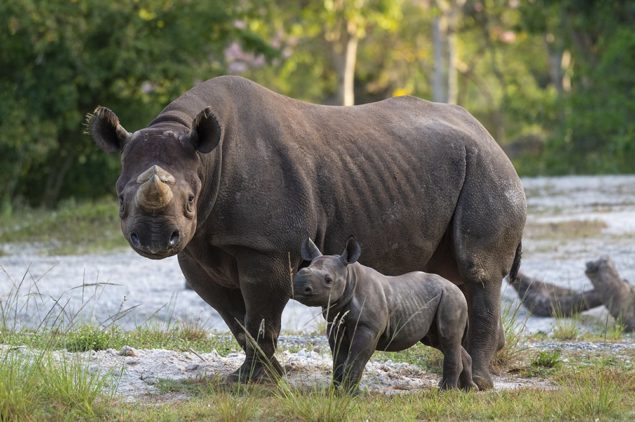|
Getting your Trinity Audio player ready...
|

After a pregnancy of approximately 15 months, “Circe,” a 21-year-old endangered black rhinoceros, gave birth to a male calf in the barn adjacent to the black rhino habitat on Feb. 24.
Mother and calf have remained off exhibit since the birth where they have been kept sheltered from external stresses and given time to properly bond. During that time, Circe has been a very protective mother and the calf has been nursing regularly while growing rapidly and gaining strength for his public debut.
Circe was born at the Riverbanks Zoo in South Carolina and came to Zoo Miami via a breeding loan with the Los Angeles Zoo. This is her fourth baby.
The father’s name is “Eddie” and he also is 21 years old. He was born at the Cincinnati Zoo and arrived at Zoo Miami in 2006 via Busch Gardens in Tampa. He has sired three offspring — all of them with Circe.
Zoo Miami has had an impressive 13 successful black rhino births under human care making it one of the nation’s most successful zoos in maintaining and reproducing this highly endangered species. From numbers reaching well over 100,000 animals in Sub-Saharan Africa at the beginning of the 20th Century, black rhinos now number less than 5,000 in the wild. They have been poached for their horn which is believed by some cultures to possess medicinal qualities and by others it is used for dagger handles as a symbol of status. It is actually nothing more than a keratin based material similar to finger nails and hair, and has never been proven to have any medicinal qualities at all.
These large herbivores can weigh up to 3,000 pounds and can be found in isolated pockets of savannah woodland in Eastern and Southern Africa where they lead a normally solitary life.
Mother and calf have been slowly introduced to the public by spending short amounts of time on exhibit during the morning with the amount of time being extended daily as the calf becomes more secure in its new environment.





